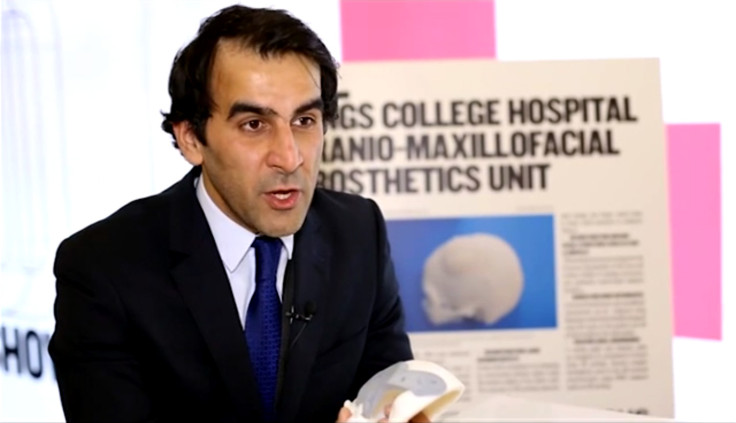3D printers 'are now a must' in hospitals treating serious head, neck and jaw injuries

Medical students and doctors are being trained to use 3D printing, especially when it comes to treating major injuries affecting the head, mouth, jaw, face and neck.
"In the past, they did not have this technology, so they had to [treat patients] manually. But nowadays, if I didn't have 3D printer technology, I wouldn't be able to do my work," Dr Muhanad Hatamleh, a senior clinical maxillofacial prosthetist at King's College Hospital, told IBTimes UK at the 3D Printshow 2015 in London.
"Now we are graduating a new generation of doctors who are now totally 100% depending on having 3D medical facilities. Having a 3D facility in any maxillofacial unit is a must. In the past, 3D printing was just an accessory, but now it is a must."
Hatamleh added that King's College Hospital first got into 3D printing seven years ago but it has only been more recently that using it has seen surgery times reduce by at least a third.
The hospital is making use of a Stratasys Objet Eden260VS printer that features a print resolution of 16-micron layers. This is not only the same thickness as a human hair but also the thinnest layer accuracy in the industry today.
Instead of having to make implants live during the surgery once they can get a better look at the injury, surgeons are now able to create implants for facial reconstructive surgery beforehand from CT scans and rehearse surgeries to make sure the procedure is faster and more precise than ever before.
"In the past we would use the 3D printer two or three times a week, but nowadays it is printing every day and we even leave it printing overnight," Hatamleh said. "The overall outcome in terms of lives saved and surgery success rates has greatly improved from 10 years ago."
© Copyright IBTimes 2025. All rights reserved.






















